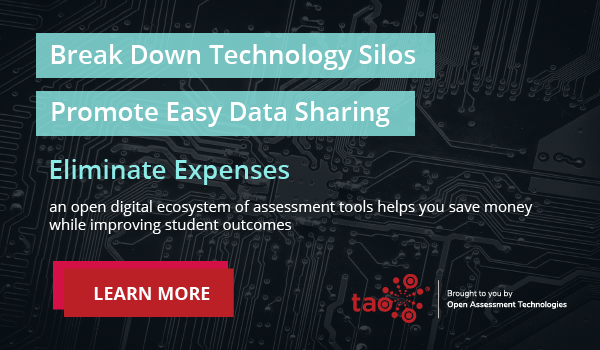Assessment and student testing are important tools in ensuring that students are growing and learning the content in the classroom. Traditionally, assessments have been given in a one-size-fits-all format with all students taking the same exam and being scored on the same rubric. This was done out of necessity in many cases as developing multiple assessments for a single class is time-consuming and difficult when done using pencil and paper. However, advancements in online assessment and digital learning have given teachers greater flexibility and a new array of adaptive testing tools to implement when assessing students.
While using tools for adaptive assessment, it is easy for teachers to customize assessments and even provide adaptive testing that more accurately measures student growth and abilities. While using these new technologies can be challenging, having a plan and understanding of adaptive testing can help. In this article, we will dive into adaptive testing and how educators can use adaptive testing technology in their classrooms.
What is adaptive testing?
For example, if a student is taking a reading test and answers a question incorrectly, the next question or reading sample can be pulled from a lower level of questions to determine how well a student reads. Conversely, if the student is answering questions correctly the difficulty can be increased to make questions more challenging.
The goal of adaptive testing is to get a true measure of what a student can do. With a traditional test, a student may get all of the questions right but the teacher doesn’t know what their upper-end skills are. It also can be used to identify where a student is tripping up in a multistep process as different versions of a question or problem can be added to identify specific misconceptions. Today, educators can use computer adaptive testing technology to make the process quick and simple.
How does adaptive testing enhance learning?
Using adaptive assessment tools not only gives teachers a more accurate view of a student’s skills and abilities, but can also help to increase learning. An adaptive test can target a student’s weaknesses and focus on questioning these areas. Adaptive testing can also create a custom difficulty level which means that it is not too easy and it is not too hard for the student. Assessments for learning can be adaptive and push students to learn content in a new way and personalize their learning experience.
An adaptive assessment may benefit students receiving special education services and multilingual learners as well. For these two groups of students, even a differentiated assessment may have gaps that hide student learning and growth. However, with adaptive assessment tools, all students can access the assessment at their level as the test changes what the student sees based on their personalized level. Adaptive testing tools also allow the teacher to discern where a student or students are getting tripped up, highlighting areas for reteaching or review.
Types of adaptive testing models
There are several different ways that teachers may use adaptive testing tools. Adaptive models can be implemented in a formative assessment, summative assessment, or even a pretest, etc. Within adaptive testing, there are a few popular approaches to measuring what students know: these include item and testlet-adaptive assessment and branching assessment. Depending on the purpose of the assessment and the skills being tested, a teacher may use one or both of these methods when assessing their students.
Item and Testlet Adaptive Assessments
An item adaptive assessment looks at a student’s response to an individual item and selects the next question presented in the test based on difficulty level. For example, a teacher may ask students to identify the products of a chemical reaction, to solve a math problem, or to define a vocabulary word. If the student can do this correctly, a more challenging test item will be given, if the student is not able to correctly perform the task a less challenging item will be presented.
Similar to item adaptive testing, with testlet adaptive testing students move through an exam based on their performance. The big difference is that instead of adapting with every item, students are given a series of related items to work through before moving on.
Branching Assessment
Another popular type of adaptive assessment is called a branching assessment. With a branching assessment, test questions are presented based on pre-configured paths depending on how the student answered the previous question (i.e. their score). For example, a science assessment may begin by having students a lower-level, fact-based question. Depending on how a student answers that question the test may move into more complex question type that uses higher-order thinking skills and require a more in-depth understanding of the topic.
Implementation and challenges of adaptive testing
To implement an adaptive test it is important to start with the end in mind by defining what you hope that the assessment will show and what standards you are looking to assess. Once you have set goals, it is important to choose an online assessment platform with adaptive assessment tools to make designing the test simple. Ensure it offers the features you require, such as adaptive question selection, real-time feedback, and data analytics.
As you design the test you will create a pool of questions covering the relevant topics and difficulty levels. Using computer adaptive testing software or platforms, you can also tag each question with metadata such as difficulty or topic. These tools for adaptive testing allow you to pull and analyze data based on question tags to show trends. When creating your first iteration of a test you may choose to run a pilot version either by yourself, with a small group of students, or with your colleagues to identify any issues with the adaptive algorithm or question bank.
Although the implementation of adaptive testing is relatively straightforward, there are some challenges that you may need to take under consideration before you get started. These challenges include:
- Resource Intensity: Developing adaptive tests requires a significant investment of time, expertise, and resources to create a large pool of questions and develop the adaptive algorithm.
- Technical Complexity: Adaptive testing systems can be complex to set up and maintain, requiring expertise in both testing and technology.
- Validity and Reliability: Ensuring that adaptive tests are valid and reliable requires careful design and validation to ensure that they accurately measure what they are intended to measure.
- Access and Equity: Ensuring that all students have equal access to adaptive testing can be challenging, particularly in schools or regions with limited technology resources or internet access.
- Training and Familiarity: Teachers and students may require training to understand how adaptive testing works and how to interpret the results effectively.
By developing an overall EdTech culture, implementing professional development opportunities to support teacher adoption, and using computer adaptive testing software, schools can prepare educators and get a better understanding of student growth and achievement.
The bottom line
Adaptive testing technology provides the tools for adaptive testing and makes assessing students and looking at large data sets simple. Computer adaptive testing software acts as a facilitator, providing students with the next question set automatically and enabling real-time feedback on student performance. Adaptive testing platforms use algorithms to select and administer questions based on the student’s responses, adjusting the difficulty level in real time. This personalized approach helps to more accurately measure the student’s abilities by targeting questions at their skill level, ultimately providing a more accurate assessment of their knowledge.
Adaptive testing technology also enables adaptive testing to be more efficient and scalable than traditional testing methods. With adaptive testing, large pools of questions can be created and stored in digital formats, allowing for a wide variety of questions to be presented to students. Using adaptive testing technology allows for the automatic scoring and analysis of test results, providing immediate feedback to both students and teachers. This feedback can be used to identify areas of strength and weakness, inform instructional decisions, and track student progress over time, ultimately leading to more effective teaching and learning outcomes.

